Brazil Wheat Faces One Weather Challenge after Another
Brazil wheat production for 2017/18 is estimated at 5.2 million metric tons (mmt), down 1.53 mmt or 23 percent from last year and down 7 percent from the 5-year average. Area is estimated at 1.95 million hectares, down 0.17 mha from last year. Lower prices and higher costs of production have driven wheat area down for the third year in a row, and wheat area (see Figure 1) has declined an average of 10 percent per year since 2015. This season has been a challenging one due to a series of unfavorable weather events that have reduced prospects for the crop.
Wheat is grown primarily in the two southern states of Parana and Rio Grande do Sul (see Figure 2). Less than 15 percent is produced in the minor wheat areas of the center-west and southeast regions. Wheat is planted from April through July in the southern region and from April through May in the center-west and southeast regions. A long period of above-normal rainfall from mid-May to early June delayed planting (see Figure 3) in Rio Grande do Sul, where one-fourth of the wheat is produced. Beginning in mid-June, dry weather enabled planting to resume.
The planting campaign was brought to an end with a frost that occurred on July 18 and 19. Freezing temperatures extended over wheat areas in Rio Grande do Sul and Parana. Vegetative wheat in Rio Grande do Sul was little affected by the frost, but wheat in northern and western Parana was in reproductive stages and vulnerable to frost damage. The lowest temperatures on July 18 (see Figure 4) occurred primarily in the southern half of the state, limiting crop damage to the far western portion of Parana, in the sub-regions of Cascavel and Toledo, potentially affecting an estimated 65,000 to 75,000 hectares. The Parana State Secretary of Agriculture’s (SEAB-DERAL) early assessment of damage included reductions in yield and losses in area that reduced the Parana wheat crop to 2.8 mmt, down 6 percent from the initial estimated production.
Dry weather that began in mid-June persisted (see Figure 5). Rainfall during June and July was far below normal for the region, with July estimated as the driest in 30 years in northern Parana. Some crop losses due to prolonged dryness have already been identified in Rio Grande do Sul by the State Technical Assistance and Rural Extension Enterprise in Rio Grande do Sul (EMATER/RS) and in Parana by SEAB-DERAL. Moisture is critically needed in wheat growing areas to replenish soil moisture for proper development of the crop (see Figure 6). The month of August started out dry but brief episodes of rain in recent weeks have occurred in Rio Grande do Sul and Parana. Additional moisture would benefit the wheat crop as it progresses through the reproductive phases of growth. The satellite-derived NDVI (normalized difference vegetation index) is below last year and below average, indicating the stressed and delayed condition of the crop (see Figure 7). Wheat harvest begins in August, in the center-west and southeast regions, and continues through December in the south.
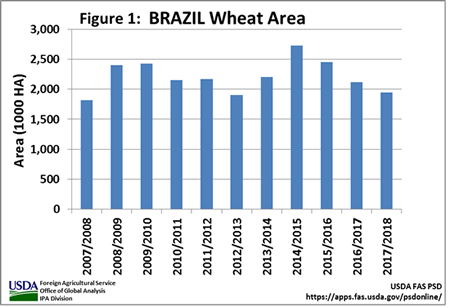
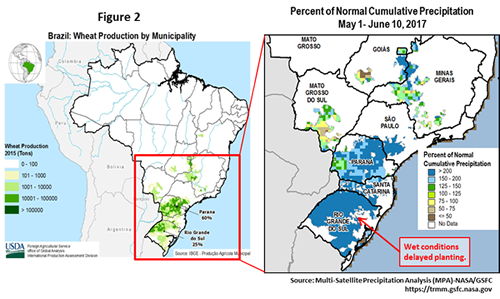
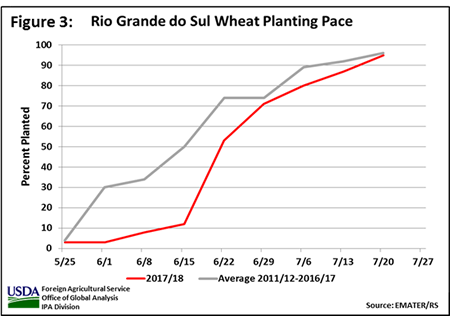
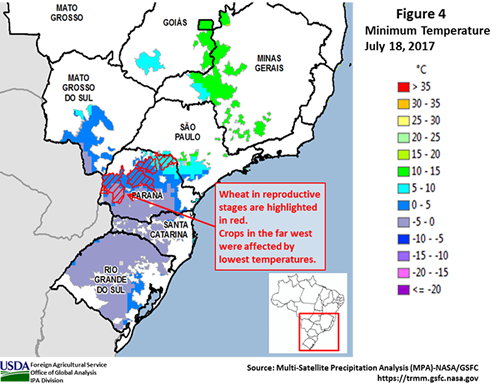
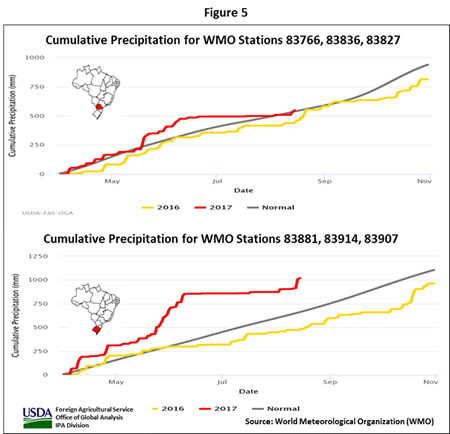
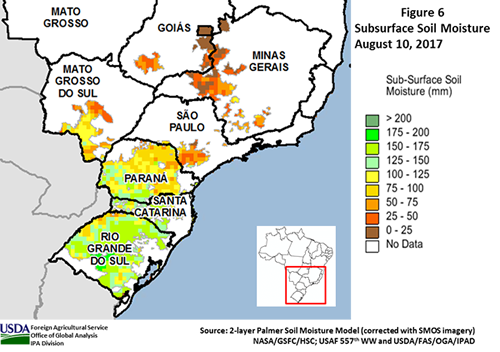
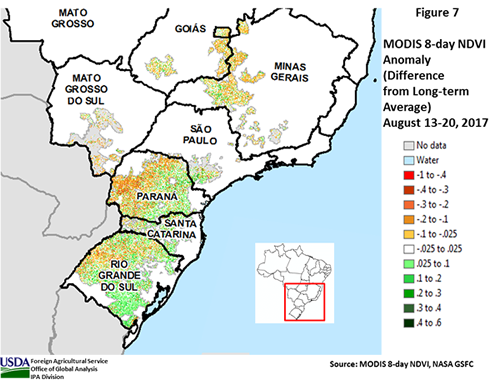
Current USDA area and production estimates for grains and other agricultural commodities are available on IPAD's Agricultural Production page or at PSD Online.
Visit Crop Explorer http://www.pecad.fas.usda.gov/cropexplorer/
|

